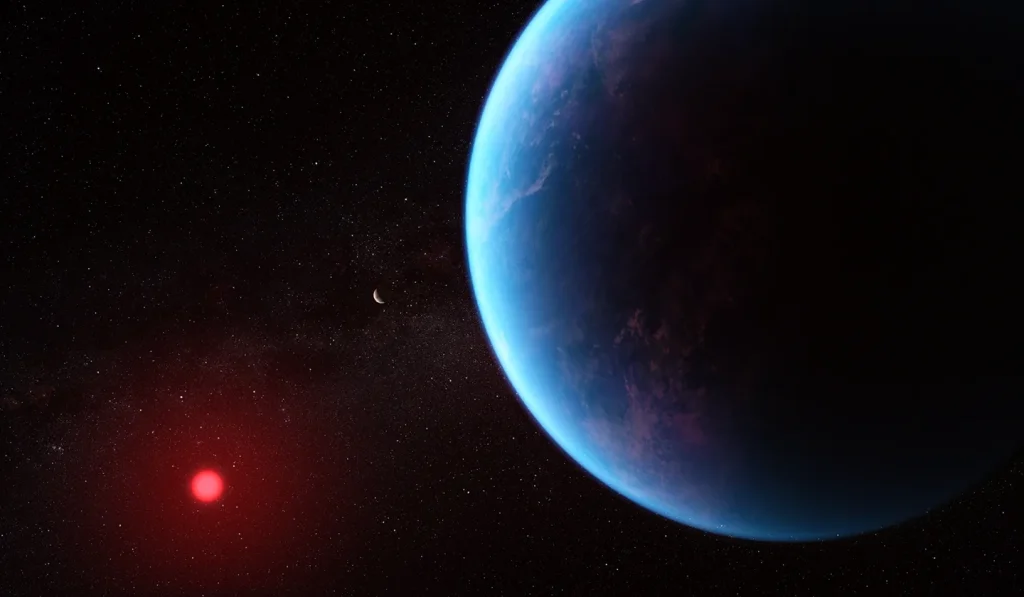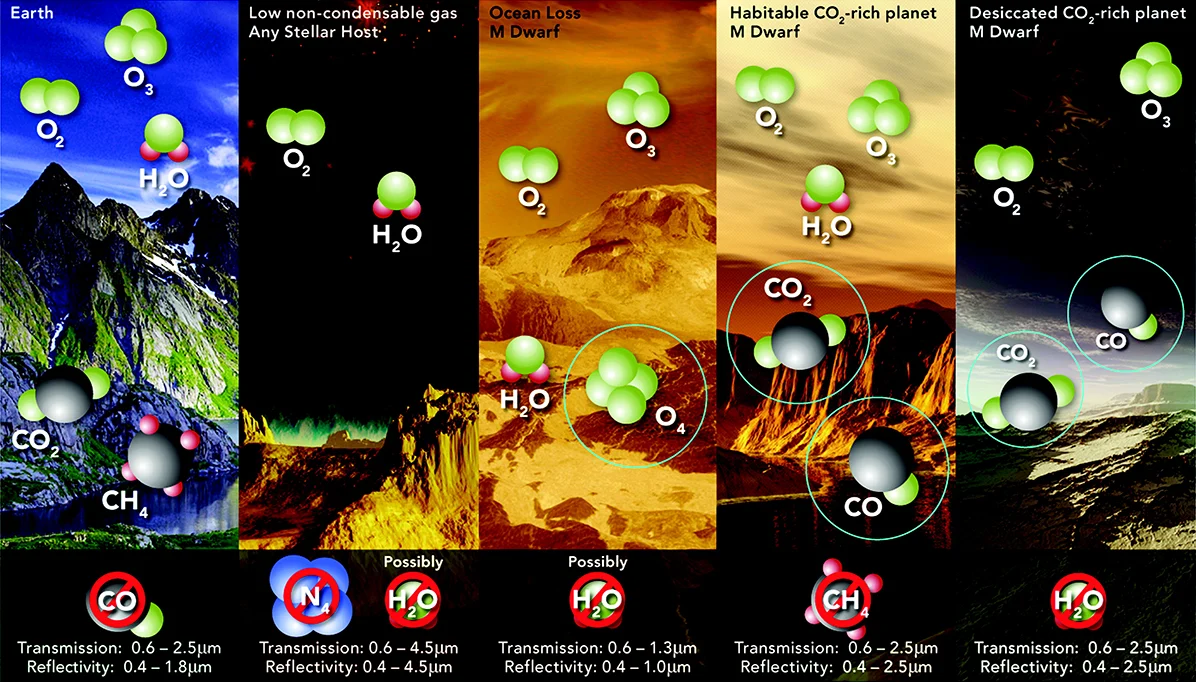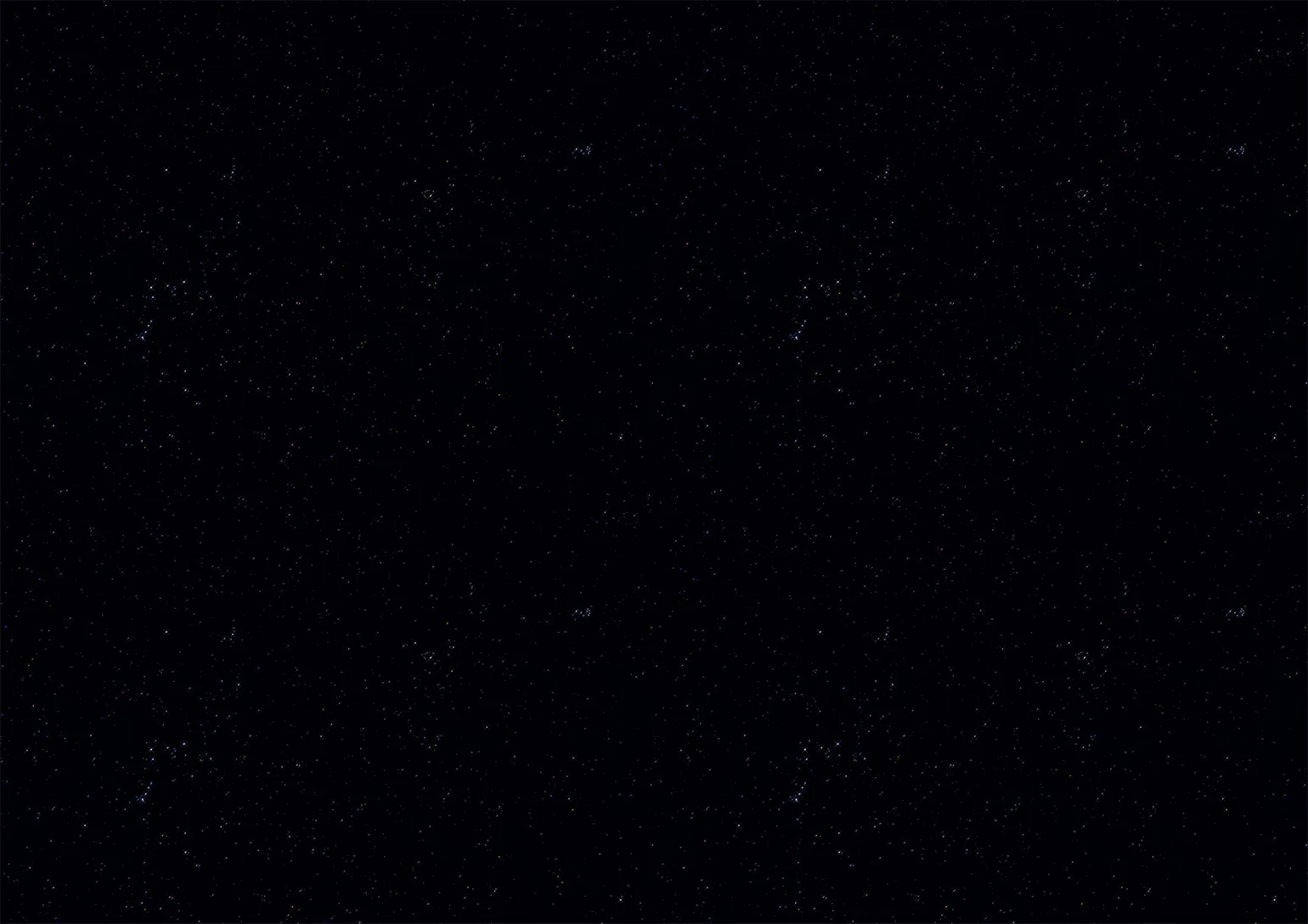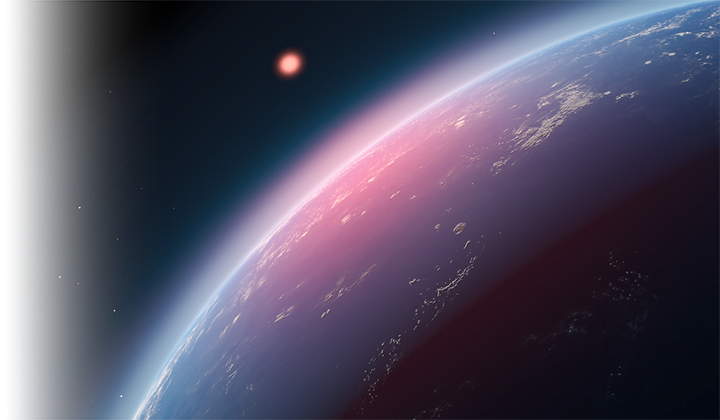A biosignature is an indicator of the presence of life on a planet.
The search for life on habitable exoplanets involves spectroscopic observations of their atmospheres to detect gaseous molecules that may be produced by life on the planet. A biosignature in this context refers to a single gas or combination of gases of biological origin. An ideal biosignature is expected to have no significant non-biological (abiotic) source in the given environment, have a strong spectral signature that is observable, and be present in large enough quantities to be detectable.

On Earth, life produces a large number of gases but most are in too small quantities to be detectable in the atmosphere at astronomical distances. The most prominent biosignature gases in the Earth’s atmosphere are oxygen (O2), its photochemical derivative ozone (O3), nitrous oxide (N2O) and, to some extent, methane (CH4). Recent reviews of biosignatures for exoplanets can be found in Schwieterman & Leung, (2024) and Madhusudhan (2025).
For hycean worlds, which have hydrogen (H2) dominated atmospheres, the prominent biosignature molecules in the Earth’s atmosphere may not qualify as robust biosignatures. This is because oxygen-rich molecules such as O2 or O3 are unlikely to be stable in significant amounts in the presence of substantial H2, while molecules such as CH4 may be more readily formed through abiotic atmospheric processes. Instead, searches for biosignatures on hycean worlds are focused on less dominant biogenic molecules known on Earth which can be abundant and not have significant non-biological sources in H2-rich environments (Madhusudhan et al. 2021). Such molecules include dimethyl sulfide (DMS), dimethyl disulfide (DMDS), methyl Chloride (CH3Cl), and others. Several of these molecules are produced uniquely by microbial life on Earth, particularly in marine environments, with no significant non-biological sources.

It is important to note that the presence of a single biosignature gas is typically not sufficient to confirm biological activity. Abiotic processes, such as photochemistry or outgassing from the interior can produce a wide range of molecules, including O2 as shown above. Instead, the coexistence of multiple gases, particularly in disequilibrium (where the rates of reversible reactions are not balanced) for a given environment, provide a more reliable assessment of possible biological activity on a planet. For example, even though CH4 or CO2 alone may be formed non-biologically, the combination of CH4 and CO2 or O2 could be an important biosignature-pair as they are not expected to coexist on Earth without biological processes. Similarly, the combination of CH4 and CO2, along with other secondary biomarkers such as DMS or CH3Cl also increase the possibility of a biological origin.

Our research is providing new insights into possible biosignatures in hycean atmospheres using high-precision transmission spectroscopy of promising hycean candidates. Our JWST observations of the candidate hycean world K2-18 b has led to possible evidence for the biosignature molecule DMS in its atmosphere (Madhusudhan et al. 2023b). However, more observations are needed to robustly confirm the presence of DMS in K2-18 b. DMS is uniquely produced by life on Earth and has been predicted as a robust biosignature for hycean worlds.
While currently no abiotic processes are known which can produce the high abundances of DMS retrieved for K2-18 b, we continue to investigate new chemical processes which can do so. Additionally, we are exploring the high abundance of CH4, in the presence of substantial CO2, as a possible biosignature (Madhusudhan et al., 2023a, Madhusudhan et al. 2023b, Cooke & Madhusudhan 2024). However, CH4 can also be produced abiotically to some extent in H2-rich atmospheres. Besides K2-18 b, our work has also found evidence for carbon disulphide (CS2), another possible biosignature, and CH4 in a second candidate hycean world TOI-270 d (Holmberg & Madhusudhan 2024).
Receive Email Updates
As we add news and content to the website, we'll email you to keep you updated!


